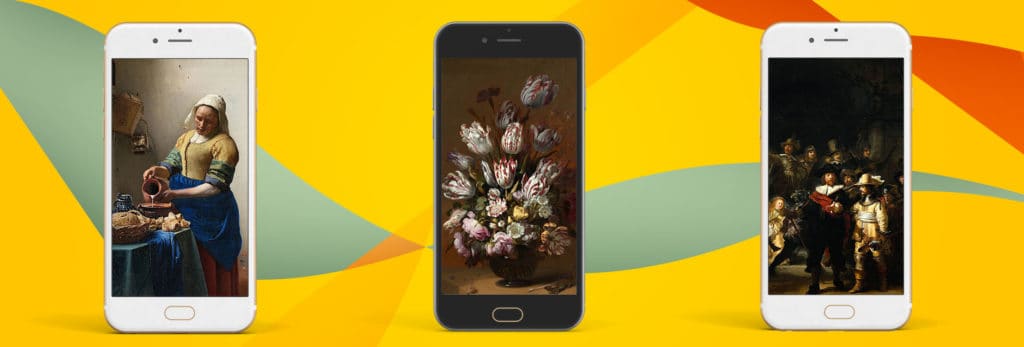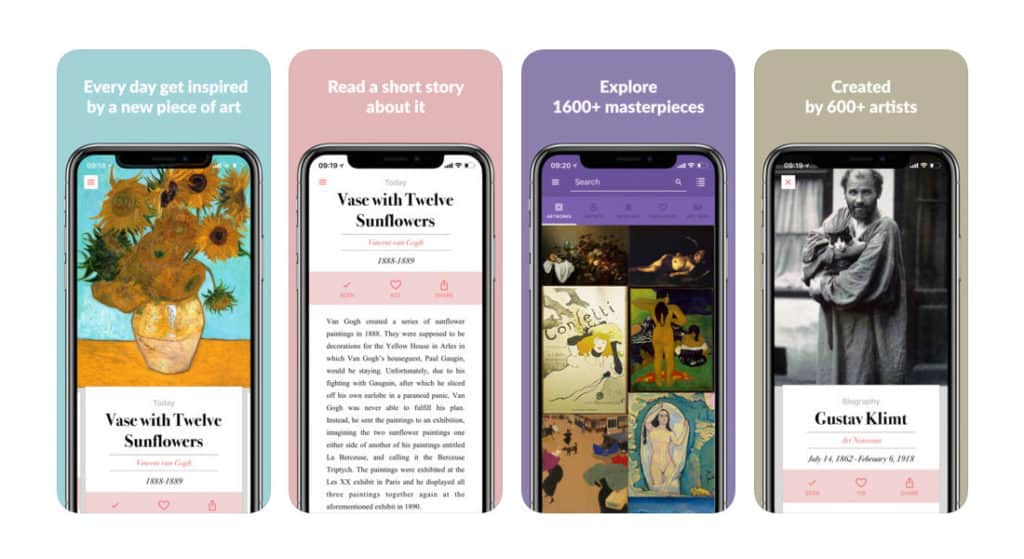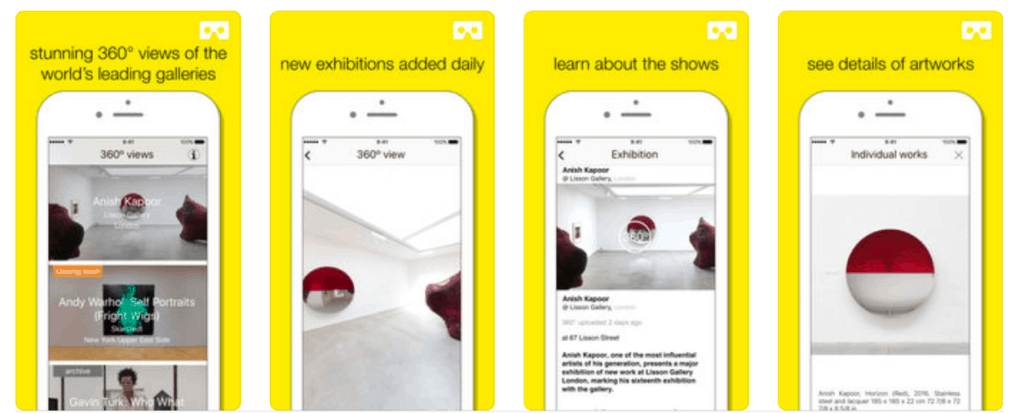It has been ten years since the first ever mobile app store was introduced. Since then, mobile applications took our reality by storm. Today, one cannot imagine communications, entertainment or shopping without using convenient applications for mobile devices. But apps can bring us closer to true works of art, too, whether we’re in a doctor’s waiting room, in the subway, on a plane or anywhere else.
Exploring exhibitions up to their tiny details
The best way to experience art is to see it with your own eyes. Nonetheless, there is one crucial advantage of apps in the context of art – they offer you contact with works of art using unconventional means at the moment you choose and wherever you are. This is very convenient for many, but also particularly important for people with mobility impairments. People with other kinds of disabilities can also enjoy the fuller experience of art thanks to latest technologies, for example, virtual assistants or audio description. Sensors, virtual technology and augmented reality, as well as intuitive touchscreens, enable us to do much more than passively looking at artworks’ reproductions. They make our experience a lot deeper, mainly because we can interact with works of art or even become artists ourselves and remix presented works.

You can learn something more about the paintings presented above if you turn the Smartify application on and direct the camera in
your tablet or smartphone at each of them.
Mobile museums of the present era
Nowadays, every prominent museum has its own app. Mobile applications are perfect vehicles for museums to promote their collections outside their headquarters and to reach audiences in most, including very remote, parts of the world. Apps working only inside a museum building, for example, those dedicated to temporary exhibitions, are in decline. The main reason for that is high costs associated with the process of application development. It is simply more economically viable to create comprehensive solutions which will last longer and be useful on more occasions.
Examples of such apps worth exploring include:
– Guggenheim Museum (European and American art), Courbet: Entrez dans l’atelier Musee d’Orsay, MAK – Austrian Museum of Applied Arts (featuring an extensive collection of functional art and Art Nouveau masterpieces), Rijksmuseum or Museum Barberini (the application which won numerous awards and features 360° virtual tours), contemporary art from Australia (Contemporary: Art Gallery of New South Wales) and Japanese art (Tohaku Navi).
Some of the listed applications allow their users to try their hand as artists. This applies, for example, to Living Paintings: Thyssen-Bornemisza Museum and Tohaku Navi apps. With their help, you can alter Kandinsky’s paintings or create your first ever sprinkled maki-e (graphics created by sprinkling lacquer with gold or silver powder).
Although there are many mobile museum apps on the market, their quality varies. Not all are updated on a regular basis or don’t work on certain kinds of devices. Such is the case with previously excellent applications created for New York’s Museum of Modern Art, namely MoMA ART LAB (for children) and MoMA AB EX NY or the one by the Design Museum in London. These applications used to allow the audience to see the exhibitions and admire the collections from far away but have not been updated.
The problem with updating mobile applications is more far-reaching and is not specific for applications created for museums. Young creators of mobile applications often forget that the work does not end on the day of the premiere, but is rather a never-ending concern. Applications have to be continuously updated so that they can satisfy the needs of their increasingly demanding users. We should also mention that certain applications, even if updated regularly, do not work correctly. Sometimes they just do not operate smoothly, either due to their overall quality, varying technical demands of different kinds of mobile devices (tablet computers, smartphones) or wi-fi transmission interference.
There is another way to enjoy museum collections, namely collective applications featuring exhibits from more than one institution. An example of such application is an extremely popular DailyArt, which familiarises its users with one work of art every day, or Google Art&Culture, which allows a 360° virtual tour of renowned cathedrals, squares and buildings. It also gives you an opportunity to search for a portrait of your lookalike. Smartify application is another solution that is worth noting, often referred to as ‘Shazam of the Art Museums’. It is an augmented reality app, which will help you identify works of art from the collections of several dozen museums and art galleries (for example Turner Contemporary in London, Rijksmuseum Twenthe in Amsterdam, Laguna Art Museum in Los Angeles). All you have to do is scan a picture or a reproduction with your smartphone’s camera.
If you are into modern art, you will love ArtPassport application, which won many accolades. The 360° virtual tours it offers will take you to the latest exhibitions at the most renowned galleries in London, New York or even Reykjavik, for example Gallery of Everything, London, Yancey Richardson Gallery, New York, Berg CONTEMPORARY, Reykjavikwithout having to leave your comfortable armchair to do that.
Please touch the painting – what our virtual museum visits will look like in the future
Mobile apps become increasingly interactive and, thus, allow us to familiarise ourselves closer with artists and their works. This is why virtual museum visits are more and more enjoyable and intuitive. Thanks to state-of-the-art technologies, museums and art galleries can easily reach new audiences and entertainingly present their collections. There are also several solutions available, which museums can use to easily create their own mobile apps at a lower cost. To give an example, museums can use iBulidApp or Eye Jack application, which enables them to add augmented reality elements to their exhibitions.
Perhaps in the near future, we will be able to touch a sculpture or a painting and feel its texture through the screen of our smartphone or laptop. This may soon be possible thanks to modern screens simulating textures through electrical impulses. If this is the case, our virtual experiences with works of art will become even more natural and real. Other interesting results can be brought about by experiments with artificial intelligence. Bots and virtual assistants may soon give us museum tours (both when it comes to real museums, as well as their virtual counterparts). They will lead us through exhibits which will be perfectly suited to our preferences and tastes. The future of virtual museum and gallery visits looks bright, so stay tuned!












